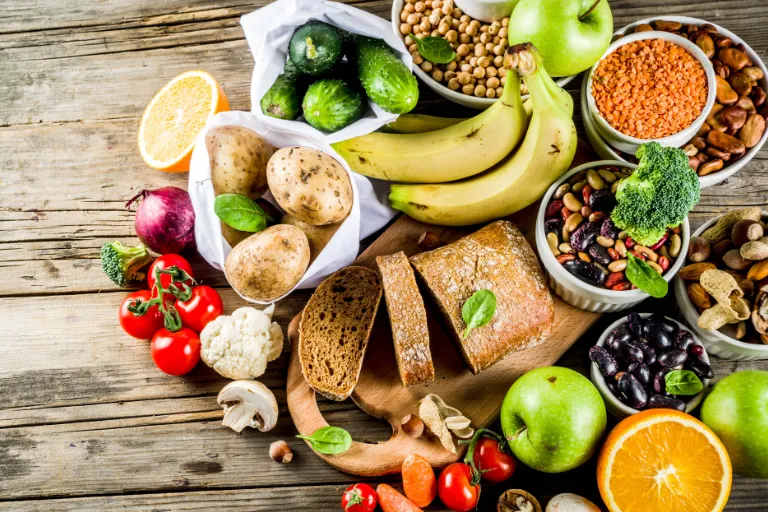Key Points:
- Not all dietary fibers are beneficial—some may trigger inflammation in sensitive guts.
- Prebiotic fibers like inulin and FOS can worsen symptoms in users with inflammatory gut issues or irritable gut.
- Research shows fiber type, microbiome diversity, and user profiles determine individual response.
- Understanding your fiber tolerance may ease bloating, discomfort, and long-term gut health issues.
In a culture obsessed with gut health, fiber wears a health halo. It’s prescribed for regularity, praised for feeding good bacteria, and promoted across everything from cereal boxes to probiotic gummies. But emerging science tells a more complex story—one where not all fibers are created equal, and in some users, certain types may actually worsen gut inflammation.
For millions dealing with bloating, cramping, or unpredictable digestion, the trigger may not be gluten or dairy—but the very fibers they were told to eat more of.
Why This Matters
Digestive discomfort affects more than half of U.S. adults. The American Gastroenterological Association reports that over 60 million Americans experience persistent gut symptoms. For users with irritable gut, inflammatory gut issues, or small intestinal bacterial overgrowth (SIBO), common dietary fibers—especially processed additives—can inflame rather than soothe.
As the wellness market floods with fiber-enriched foods, prebiotics, and powders, it’s critical to know which types of fiber help—and which may hurt.
The Fiber Paradox: When “Healthy” Isn’t Helpful
Fiber falls into two main categories:
- Soluble fiber dissolves in water, forming a gel-like substance. It feeds beneficial bacteria and slows digestion. Sources include oats, legumes, and psyllium.
- Insoluble fiber does not dissolve, instead adding bulk to stool and speeding up transit. Found in wheat bran, whole grains, and many vegetables.
A third group, prebiotic fibers—such as inulin and fructooligosaccharides (FOS)—are often added to “gut-friendly” foods. While they stimulate growth of beneficial bacteria, they can also cause bloating and trigger immune responses in users with disrupted gut environments. One peer-reviewed review found that these fibers, when rapidly fermented, can increase pro-inflammatory cytokines like IL-6 and TNF-α, particularly in those with irritable gut symptoms1.
What Is Gut Inflammation?
Gut inflammation can be overt—seen in bloodwork or biopsies—or subtle and subclinical. It may present through elevated biomarkers such as fecal calprotectin or C-reactive protein (CRP), but in everyday life, it shows up as bloating, urgency, pain, and irregular bowel movements.
Certain fibers can contribute to this inflammatory response by:
- Altering gut microbiota in ways that promote dysbiosis2.
- Disrupting the mucosal barrier, increasing permeability (“leaky gut”)3.
- Triggering the immune system in sensitive individuals4.
What the Research Shows
Inulin
Derived from chicory root, inulin is commonly added to bars, yogurts, and supplements. A 2021 randomized trial published in Clinical Nutrition showed that inulin elevated IL-6 and worsened symptoms in users with irritable gut5.
Wheat Bran
Wheat bran is a classic insoluble fiber. Yet a study published in Gut found that in users with inflammatory gut issues, it aggravated symptoms due to both its physical abrasiveness and its fermentation by gas-producing bacteria6.
Resistant Starch
Found in green bananas and cooked-then-cooled potatoes, resistant starch can improve gut function in some users. However, in those with SIBO, its fermentation in the small intestine may lead to significant bloating and mucosal stress7.
Psyllium
Psyllium husk is often recommended for regularity. A 2019 study in the American Journal of Clinical Nutrition showed that while psyllium can reduce urgency, it caused bloating and fermentation-related symptoms at higher doses8.
Why Individual Response Varies
The gut is not one-size-fits-all. Genetics, microbiome diversity, and immune history all influence fiber tolerance. A 2022 analysis in Cell Host & Microbe found that individual microbiome profiles predicted whether users benefited from or reacted negatively to fiber intake9.
Users with post-viral fatigue, trauma-related digestive dysregulation, or inflammatory gut issues often experience heightened reactivity to fermentable fibers—especially those classified as FODMAPs (fermentable oligo-, di-, mono-saccharides and polyols).
Subscribe for Free for more insightful health articles tailored to your needs.
What Experts Recommend
The American Gastroenterological Association now emphasizes personalized nutrition over generic fiber guidelines10. The World Gastroenterology Organisation’s 2023 update advises against prebiotic fiber supplementation in users with active gut inflammation, recommending a trial-based reintroduction approach instead11.
Functional nutrition experts also support elimination protocols, such as the low-FODMAP diet, to help identify which fibers trigger symptoms in each individual.
Hidden Sources of Fiber Additives
Many “high-fiber” processed foods include synthetic or isolated fibers like:
- Polydextrose
- Resistant maltodextrin
- Chicory root extract
A 2020 review in Frontiers in Nutrition warned that these additives, while increasing total fiber on labels, can disrupt microbial balance and irritate the mucosal lining in vulnerable users12.
Practical Guidelines: Choose Wisely
Generally Well-Tolerated Fibers
- Cooked oats
- Steamed vegetables (e.g., carrots, zucchini)
- Flaxseed (ground)
- Psyllium (low-dose)
- Berries
Potentially Problematic Fibers
- Inulin and FOS (especially as additives)
- Wheat bran
- Chicory root fiber
- Resistant starch (especially in SIBO)
- Polydextrose and maltodextrin
Self-Check: Are You Fiber Sensitive?
Try this 4-step fiber tolerance test:
- Track your symptoms daily after eating high-fiber foods.
- Eliminate added fibers like inulin or polydextrose for two weeks.
- Reintroduce one fiber type at a time while monitoring symptoms.
- Consult a health professional if discomfort persists or escalates.
Final Thoughts
Fiber isn’t the enemy. But it’s not a universal remedy either. For users with inflamed or sensitive guts, smarter—not more—may be the key. When fiber fits your biology, it can build a stronger gut. When it doesn’t, it may quietly undermine it.
Understanding how your body responds to different fiber types can reduce symptoms, calm inflammation, and put you back in control of your digestive health.
The article does not in any way constitute as medical advice. Please seek consultation with a licensed medical professional before starting any treatment. This website may receive commissions from the links or products mentioned in this article.
Subscribe for Free for more insightful health articles tailored to your needs.
Sources
- Davani-Davari, D. et al. (2019). Prebiotics: Definition, Types, Sources, Mechanisms, and Clinical Applications. Foods, 8(3), 92. https://doi.org/10.3390/foods8030092
- Vandeputte, D. et al. (2017). Prebiotic inulin-type fructans induce specific changes in the human gut microbiota. Gut, 66(11), 1968–1974. https://doi.org/10.1136/gutjnl-2016-313271
- Deehan, E. C., & Walter, J. (2016). The Fiber Gap and the Disappearing Gut Microbiome: Implications for Human Nutrition. Trends in Endocrinology & Metabolism, 27(5), 239–242. https://doi.org/10.1016/j.tem.2016.03.001
- Sonnenburg, E. D., & Sonnenburg, J. L. (2019). The ancestral and industrialized gut microbiota and implications for human health. Nature Reviews Microbiology, 17(6), 383–390. https://doi.org/10.1038/s41579-019-0191-8
- Holscher, H. D. et al. (2021). Inulin and prebiotic fiber supplementation increases gas and bloating in irritable bowel users. Clinical Nutrition, 40(6), 3987–3995. https://doi.org/10.1016/j.clnu.2021.02.015
- Eswaran, S. et al. (2013). Fiber and functional gastrointestinal disorders. American Journal of Gastroenterology, 108(5), 718–727. https://doi.org/10.1038/ajg.2013.63
- Martínez, I. et al. (2010). Resistant starches produce changes in the microbiota and increase short-chain fatty acids in users with SIBO. Journal of Nutrition, 140(10), 1932–1936. https://doi.org/10.3945/jn.110.123356
- Rao, S. S. et al. (2019). Effects of psyllium and bran on gastrointestinal transit and symptoms. AJCN, 109(5), 1223–1232. https://doi.org/10.1093/ajcn/nqz017
- Johnson, A. J. et al. (2022). Daily microbiome composition predicts personalized responses to dietary fiber interventions. Cell Host & Microbe, 30(4), 612–623. https://doi.org/10.1016/j.chom.2022.02.006
- American Gastroenterological Association. (2021). Clinical Practice Update on Diet in Irritable Bowel Syndrome. https://www.gastro.org/guidelines
- World Gastroenterology Organisation. (2023). Gut Microbiota and Probiotics: Global Guidelines. https://www.worldgastroenterology.org
- Slavin, J. (2020). Fiber and Prebiotics: Mechanisms and Health Benefits. Frontiers in Nutrition, 7, 128. https://doi.org/10.3389/fnut.2020.00128



